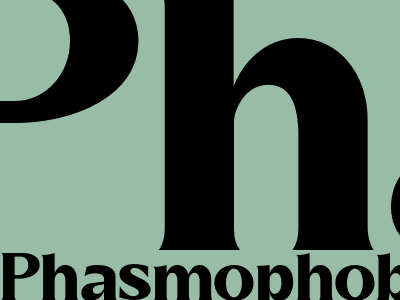Phasmophobia Wiki: A Comprehensive Guide to Hunting and Identifying Ghosts
Introduction
Phasmophobia, a cooperative horror video game, has captivated players with its immersive gameplay and eerie atmosphere. In this game, players take on the role of ghost hunters investigating haunted locations. The game features a wide range of ghosts, each with its unique characteristics and abilities. This wiki aims to provide a comprehensive guide to the various ghosts in Phasmophobia, covering their strengths, weaknesses, and strategies for identifying and countering them.
Ghost Types
Phasmophobia currently features 12 distinct ghost types, each with its unique abilities and behaviors:
- Banshee: A powerful ghost that screams loudly when threatened.
- Demon: A fast and aggressive ghost that can possess players.
- Goryo: A Japanese ghost that hunts in the dark.
- Hantu: A ghost that can interact with objects.
- Jinn: A ghost that becomes faster when the lights are off.
- Mare: A ghost that can paralyze players.
- Myling: A child ghost that can be heard crying.
- Oni: A ghost that becomes stronger and faster during a hunt.
- Phantom: A ghost that can move through objects.
- Poltergeist: A ghost that can throw objects and interact with the environment.
- Revenant: A ghost that can hunt multiple players at once.
- Shade: A ghost that is difficult to detect.
Ghost Strengths and Weaknesses
Each ghost type has specific strengths and weaknesses that players must consider when hunting. For example, the Banshee is powerful but vulnerable to noise, while the Demon is fast but weak to light. By understanding these strengths and weaknesses, players can develop effective strategies for identifying and countering each ghost.
Identification and Evidence
Identifying the specific ghost type is crucial for developing an effective strategy. Phasmophobia provides various tools and evidence for players to gather information and make an accurate identification. These include:
- Ghost Orb: A small, floating orb that appears near the ghost.
- Fingerprints: Fingerprints left on objects by the ghost.
- Freezing Temperatures: A sudden drop in temperature can indicate the presence of a ghost.
- Ghost Writing: Words or symbols scratched into surfaces.
- Spirit Box: A device that allows players to communicate with ghosts.
- EMF Reader: A meter that detects the electromagnetic field generated by ghosts.
Hunting Strategies
Once the ghost type has been identified, players can develop a hunting strategy to capture or banish it. Some general strategies include:
- Noise: Some ghosts are vulnerable to noise, so using items like noisemakers can provoke them into interacting.
- Light: Some ghosts are affected by light, so turning on lights or using flashlights can delay or interrupt a hunt.
- Prayer Candles: Praying in front of a prayer candle will provide a few seconds of immunity from ghost hunts.
- Hiding: When a ghost is hunting, players can hide in closets or lockers to temporarily avoid being detected.
- Crucifix: Using a crucifix near a ghost will prevent it from hunting for a short period.
Conclusion
Phasmophobia offers a thrilling and challenging experience for players who enjoy cooperative horror and investigation. By understanding the various ghost types, their strengths and weaknesses, and effective hunting strategies, players can successfully navigate haunted locations and uncover the mysteries of the supernatural.

Comments